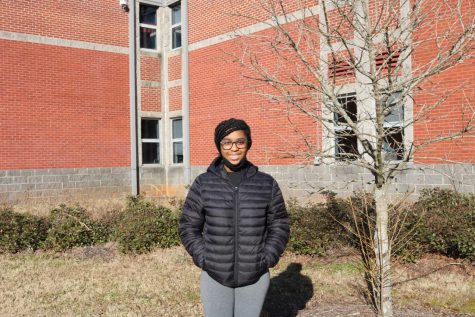Cafeteria Workers Address Your Lunch Concerns

February 28, 2022
School lunches are very important, especially for low income students. School lunches should be healthy and satisfying, but some students expressed concern in a recent survey.
One thing students say about school lunches is the portion sizes. Daniel Mu, a student at Bob Jones, expressed how he wishes there were better portion sizes. “The lunches are literally so small. Like, when you buy pizza for your kid, do you only give them one single slice? When you make spaghetti, do you only give them a tiny scoop? It’s literally like, ‘Ok kids, here’s 2 tiny PBJ sandwiches and a fruit cup.’ How you can get full on that?”
Some people have complained to the cafeteria workers about this, but there’s only so much that they can do. Mrs. Long, the Child Nutrition Program Manager for the school, stated, “We have rules to follow on how much food can be in a serving. We don’t determine the size.”
Schools have lunch laws “rules” that they have to follow from the amount of food students get to certain food they are allowed to eat.
One of the reasons for this is the concern about child obesity. According to the article “School Lunch Guidelines and Controversy,” “When the federal guidelines for the National School Lunch Program were overhauled, growing concern about childhood obesity was factored in. The guidelines include several requirements for schools receiving federal funds for their school lunch programs.”
Some of those rules are bread products must be at least 50% whole grain, foods cannot contain any trans fats that are not naturally occurring, meals must meet both minimum and maximum calorie requirements for the age group to which they are being served, according to the U.S. Department of Agriculture standards, and regular and flavored milk must be nonfat or 1%.
This also answers some of the other opinions that students had on the school lunches. One student stated, “School lunches look low budget.”
Mrs. Long shared the cafeteria’s trouble getting food ordered. Mrs. Long said was that the food shortage and the pandemic has also had an effect on the school lunches. She expressed, “I know the students don’t like it; we don’t like it either, but we are doing our best to get food in here.”
This isn’t isolated to Bob Jones. Food shortage has been affecting many schools in the US. According to nbcnews.com, “Supply chain disruptions have upended the beginning of the school year for districts across the country as food shortages force officials to find creative ways to adequately feed children.” For example, in Alabama, it has led staff at Gulf Shores City Schools to acquire food from different vendors, shop at grocery stores, and even cook meals themselves.
Evie Waddell, a student, expressed more specific concerns. “There are not many options for people with allergies, and if there are, most of them have a chance of cross contamination. Why can’t people with these issues get food, too? I personally haven’t been able to eat them since sixth grade because of my allergies, so I can’t say much about the quality.”
Workers also expressed how they wish they could give bigger portions and options and wished that every kid in the school would come and eat. Mrs. Long stated, “I would like for every child in the school to be able to eat with us, and if I could, I would give bigger portions.”
Thank you to Mrs. Long for her interview!

